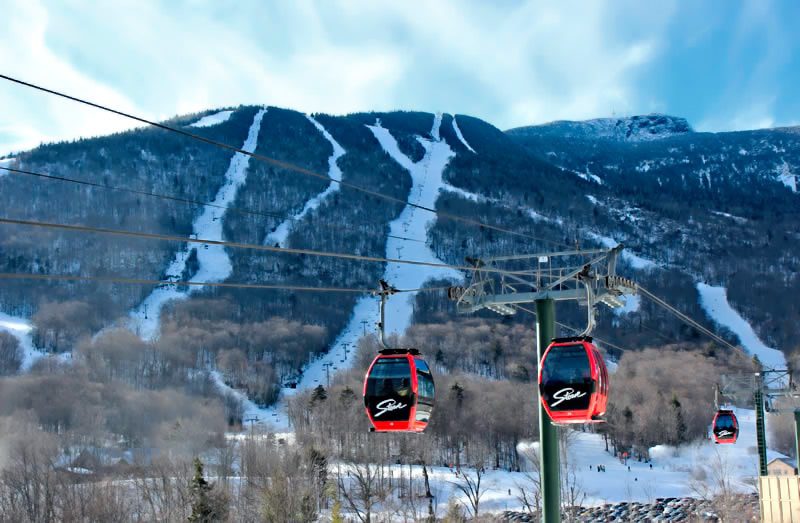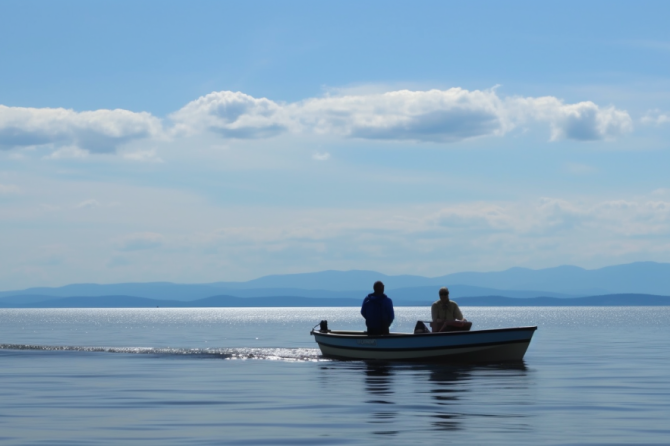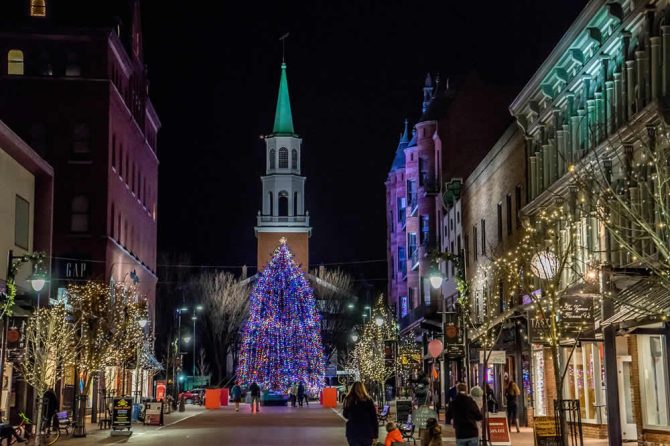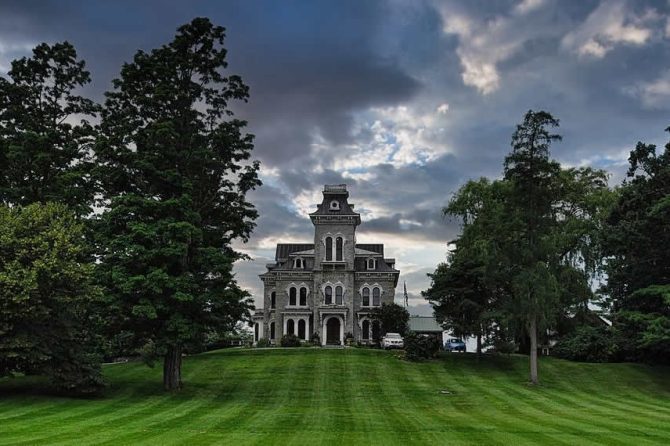Based on an article by Jeremy K. Davis
For millennia, skiing has been used as a form of transportation. Created in Scandinavia over two thousand years ago, Nordic (cross-country) skiing was used extensively, as paths and roads became blocked with snow. Skiing today is used primarily for its recreation aspects as well as for its health benefits.
Vermont has always been at the forefront of skiing
Due to Vermont’s cold, snowy climate, and mountainous terrain, the mood was set for skiing to develop from day one. The need for a major winter activity, skiing, was never more needed than the early part of this century. Skiing was seen as improving the mental and physical well being of Vermonters by offering a wholesome physical outdoor activity that made winter less dreary.
Once developed, skiing would forever change the status of the state of Vermont Vermont’s population, job base, and other factors would never be the same
The Early Years of Skiing in Vermont
During the early part of this century, many Vermonters regarded winter as merely a wasted time between the relatively short growing seasons. Lack of proper maintained roadways forced people to remain at the homestead for long periods of time. A dearth of high-paying jobs also plagued many Vermonters. Young adults were leaving the state in droves. “Why should one stay in the state with a lack of excitement,” was one commonly heard phrase among the young people of Vermont. A need for better jobs and recreation was necessary.
- Used Book in Good Condition
- Davis, Jeremy K. (Author)
- English (Publication Language)
- 160 Pages – 07/16/2010 (Publication Date) – The History Press (Publisher)
The stage was set for one of the largest influences in Vermont history-mass tourism-to develop.In the early 1900’s Norwegians living in the town of Stowe, near Mount Mansfield, began to revive the ancient sport of skiing by using it to navigate the otherwise impassable roads. Many people scoffed at such people – they did indeed look funny on those long strips of wood. Slowly but surely, skiing became more and more popular.
As it caught on, improvements to ski equipment such as more secure boots and waxed skis became more prominent. Before long, large Nordic jumps were created throughout the state, including ones in Middlebury and St. Johnsbury. There, college teams could practice and win competitions. Trails were then being cut on many mountains throughout the state, such as the Bruce trail on Mount Mansfield, and were being used as racing trails.
The First Ski Race on Mount Mansfield
The country’s first ski race on Mansfield was held in 1934, and was a “down-the-mountain run frenzy,” (Hagerman 68). Participants would hike to the summit, and then all race down in a frenzy. It was an exhausting procedure: first hiking up the mountain and then racing down it. A better way ascending the mountains had to be found. However, it would not be until 1934 that the first ski lift would come to Vermont.
Development of Modern Skiing in Vermont
Bunny Bertram, a Woodstock, Vermont native, had seen the frenzy caused by the sudden excitement over skiing. This entrepreneur developed the United States first rope tow ski lift-a long loop of continuously moving rope, powered by an antique Model-T Ford engine.
Installed on Clinton Gilbert’s farm, the first lift provided skiers many runs in one day, something that had been impossible. The lift was known for both its speed and wild rides – the speed on the lift could be cranked up to quite high velocities. The only other problem with this lift is that skiers' arms and hands were worn out, along with mittens.This simple invention allowed for a sudden discovery of the sport of skiing.
Rope Tow Ski Areas in Vermont
Almost immediately after this major event, rope tow areas sprouted across the state like wildflowers. One such area was Big Bromley, in Manchester Center. Fred Pabst, a skiing enthusiast and entrepreneur, founded this ski area in 1936. Pabst had seen the prospects of skiing as an important commodity in Vermont, and wished to see skiing introduced to the general populace. In order to do this, Pabst set up small, rope tow ski areas wherever a train station was located.
However, little money was generated from this “chain store” approach to skiing, so Pabst disposed of all except for Big Bromley. “Pabst’s motto was ‘pamper the people’” (Older 17). The approach to buying multiple areas has since been revived, as mass conglomerates have become commonplace today.
Pabst also had one more significant contribution to the development of skiing: the invention of a J-bar lift. A J-bar lift is essentially a pole, with another bar that sticks out, from which skiers are dragged up a graded slope. This lift was much easier to use, as riders did not have to grab onto a rope, but could rather ride up the mountain in comfort.
This lift was “Pabst’s greatest source of pride and joy,” (Older 17). A listing in “The Complete Ski Guide” of 1940 for Bromley read “Forty miles of trails, 250 acres of varying slopes; cable tramway; three tows; popular with the metropolis as it is close to New York, possesses interesting slalom glade, all trails designed to insure maximum safety for all classes of skiing,” (145). Bromley was categorized as a major area for that time.
In 1937, another historically important ski area would open: Pico Peak, located in Sherburne Pass in central Vermont. A racing trail, the “Sunset Schuss,” had been used for years from the top. The Mead family saw the booming rope tow areas and decided that Pico Peak would be ideal for skiing.
They installed the first United States T-bar ski lift, essentially a J-bar with another side, carrying two passengers instead of one. “It was they who made Pico the mecca of Vermont skiing in the 30’s, ” (Older 71)But it would not be until 1940 that the most common form of uphill transportation, the chairlift, would be installed in Vermont.
Stowe, as mentioned previously, had already been a winter sports headquarters, and by 1936 had created the nation’s first ski patrol (Older 84). This first single chairlift was “6300 feet long, and was designed to carry 200 skiers per hour,” (Older 85). The famous “Front Four” ski trails were installed with the chairlift, and together they offered then the most challenging skiing in the country.
Post World War II
This chairlift was only one year old when World War II exploded. World War II would lead to a major slump in skiing, as many young men left their families to go to Europe and fight. Many of these young skiers had wanted to find a way of life in the Army that resembled their life back home, and so joined the Tenth Mountain Division, a branch of the Army that dealt with mountaineering tactics. During the War, many small rope tow ski areas closed, many permanently, but once the soldiers returned, a great boom in ski areas and skiing occurred.
These army veterans were hired to teach classes and to run the ski patrol. With “Snow Trains,” trains that carried urban skiers to more rural skiing areas, many took up the sport. The post-war boom created a total of 55 ski areas by 1948 (Lorentz 243). During the 1940’s, chairlifts sprung up all over the state, along with poma lifts, T-bars, J-bars, and also more rope tows. Skiing was well on its way to becoming the sport it is today in Vermont.
Mountain maintenance was still in its infancy during the late 40’s and 50’s. After a significant snowstorm, the snow needed to be packed down in order to become more skiable. At Mad River Glen, a ski area founded in 1949 by Roland Palmedo, employees would “foot pack the entire mountain, from top to bottom,” (Mad River Glen: The Early Years). Crews would side step the entire mountain, packing the snow as they went.
No machines existed at that time that could groom a slope. Also, trails had to picked clean of rocks, roots, and other debris during the summer in order to be ski-able. Big Bromley, through this extensive “summer grooming,” could “ski and ski well with just four inches of snow,” (Older 18).
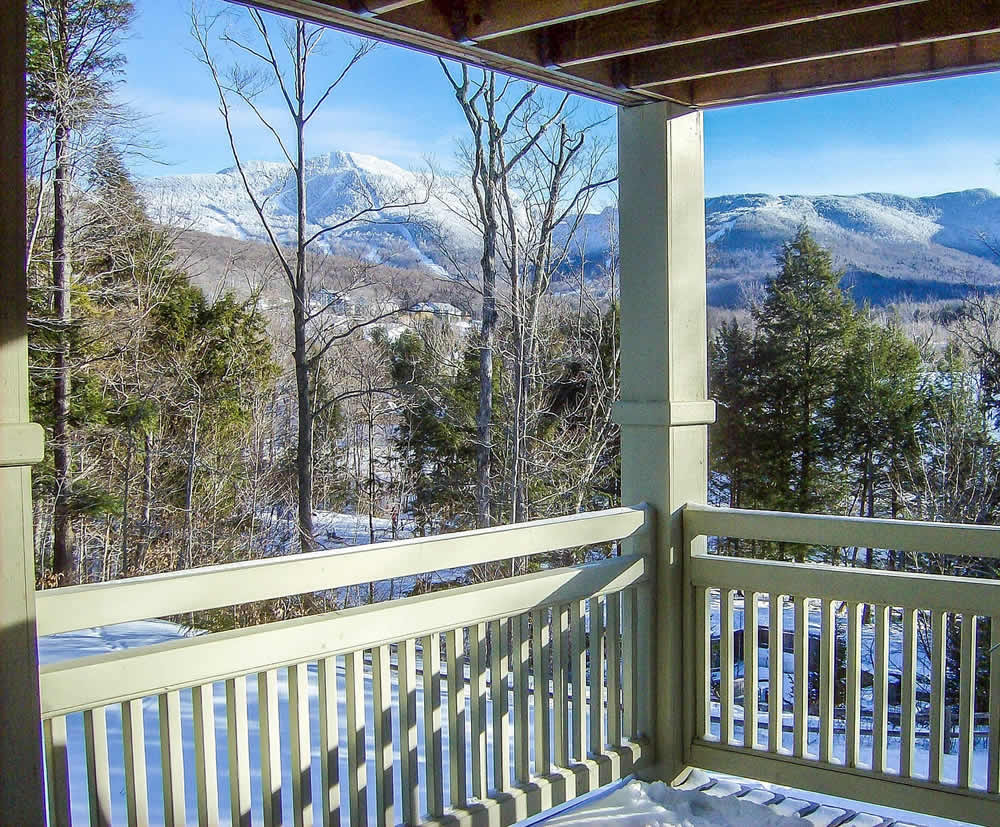
Age of Rapid Ski Development in Vermont
In the mid 1950’s, another entrepreneur by the name of Walter Schoenknecht was searching for the perfect ski area. Specifically, he was “looking for fifteen years for a mountain located near a maximum snow belt line, near the large cities,” (Long 20). He found his perfect mountain: Mount Snow, near West Dover.
Years before finding this area, Schoenknecht had operated and owned the successful Mohawk Mountain Ski Area, in Cornwall, Connecticut.Mount Snow would become one of the most accessible, fun, and enterprising ski areas of this century. Walt was known for his crazy ideas. He invented a chairlift that “ran from a series of conveyor belts, up many towers,” (Long 22). This lift provided extremely high capacity for its day: 1200 skiers per hour.
Most single chairs were providing about 250 rides per hour, and most double chairs were providing 600 or less. This high capacity allowed for tremendous amounts of people to access the slopes and trails. The slopes and trails at Mount Snow were another industry first. While most ski trails at this time had to be narrow, in order to cup and hold snow, Mt. Snow’s trails were extra wide, and “were banked so that snow would hold in the middle,” (Tales From the Mountain: Mount Snow’s First 40 Years). The design of extra wide trails would find its way to other areas, which soon adapted this philosophy of trail design.
Walt Schoenknecht has been likened to “the Walt Disney of Vermont,” (Tales From the Mountain: Mount Snow’s First 40 Years). One of his other “crazy” ideas was Fountain Mountain. At the Snow Flake Lodge near the base of the mountain was a small lake. Walt had decided to build a large, 150-foot high fountain for its aesthetic appeal. However, it could not be turned off during the winter, so it was allowed to run all winter long. This produced a several hundred feet high mound of ice, from which ski races were held during the late spring!
Also, Walt went against the philosophy at that time of having ice skating outside and a swimming pool inside. He built a large indoor ice skating inside, and put the swimming pool outside, near the lifts! (Tales From the Mountain: Mount Snow’s First 40 Years). His ideas became even weirder as the years progressed. If Schoenknecht had had his way, he would have dropped an atomic bomb, in order to increase the vertical footage to hold the Olympics! (Tales From the Mountain: Mount Snow’s First 40 Years).
Walt Schoenknecht forever changed the impression that skiing was just for the super fit
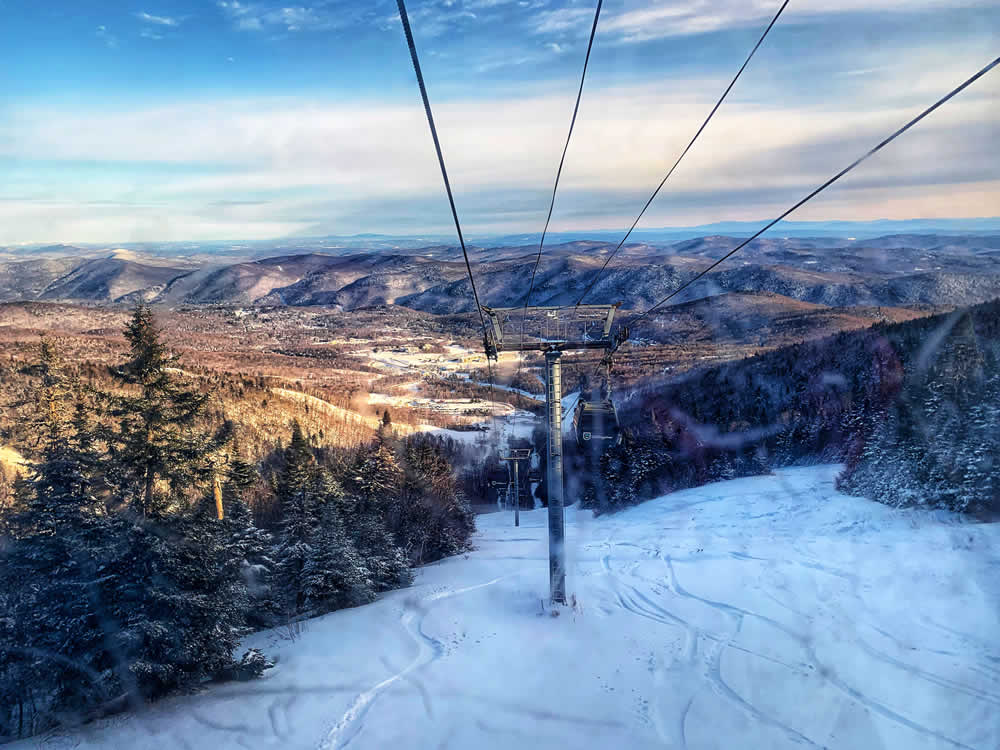
Now families could enjoy his mountain, along with other mountains, as some of his ideas spread to other areas.It was around this time that Preston Leete Smith, a young ski enthusiast began looking for his perfect mountain. Perry Merrill, known as “the father of Vermont’s State Parks and Alpine Ski Areas,” (Lorentz 20), was approached by Smith in 1955. Merrill was the Vermont State officer who could lease State land, and told Smith about the Killington prospects.
The mountain had good snow and a good location, and the state was willing to lease the land to Smith. Pleasantly surprised, Smith returned to the mountain to begin its development.Throughout the late 1950’s and early 60’s, Killington expanded like no other ski area had. This pace was “well above industry standards,” (Lorentz 58). Peak after peak was opened, with a high variety of runs and lifts. Smith had wished that his ski area would be accessible for all levels of skiers, from novice to expert. He did not wish to have novices relegated to lower slopes, when the views that the skiers wanted were located high up. To accomplish this goal, beginner trails were constructed from the top of all lifts, and the Graduated Length Method ski teaching method was created.
This new method of ski teaching worked on the strengths, rather then the weaknesses of the beginner skier. Instead of Austrians barking out commands, new learners were cajoled into learning at their own pace, while enjoying the sport.Throughout the 1960’s, ski areas including Big Bromley and Killington began to install snowmaking systems.
Snowmaking, invented during the 1950’s, was considered a “banana belt” luxury, supposedly used only in southern resorts (Lorentz 71). Bromley’s system was “the largest snow farm in the world,” (Carroll 12). However, several low snow seasons prompted the initial use of snowmaking. Basically, during this decade ski areas could only cover a few trails, but it was these trails that could remain open during both thaws and periods of dry cold weather. Although scoffed at, Killington and Bromley would see an increase of skier visits with the addition of snowmaking.
Slow Decline in Vermont Ski Areas
1966 was the year with the greatest number of ski areas in the state of Vermont. A total of 81 ski areas operated during this year. About one fourth of these areas were considered “major,” with large vertical drops and modern lifts. After this high, the number of ski areas dropped off slowly, then much more rapidly during the 1970’s, as small rope-tow and T-bar ski areas went out of business.
One of the small community – type rope tow areas that closed was located at Lyndon State College. This area was run primarily for students as part of the physical education program, from 1963 to 1970. Located on Vail Hill, the area had a 300-foot rope tow, night skiing, racing, and an 80-foot drop.
Some of this diminishment of ski area numbers can be attested to Vermont Environmental Act 250, passed in 1970. This act allowed only limited development to progress in mountainous regions. Growth was not stopped, it was just severely limited. Killington would not install any more lifts until the late 1970’s.
In the limited development era of that decade, the trails that were cut had dramatically changed in character from their counterparts of the 50’s and 60’s. Trails that could now be covered with snowmaking were cut wide and steep. They were cut “like giant parallel arcs of a snowcone,” (Mad River Glen: The Early Years). These larger trails allowed for greater numbers of skiers to access the slopes, considering the new lifts that were being installed were now triple chairlifts, capable of carrying 1800 skiers per hour.
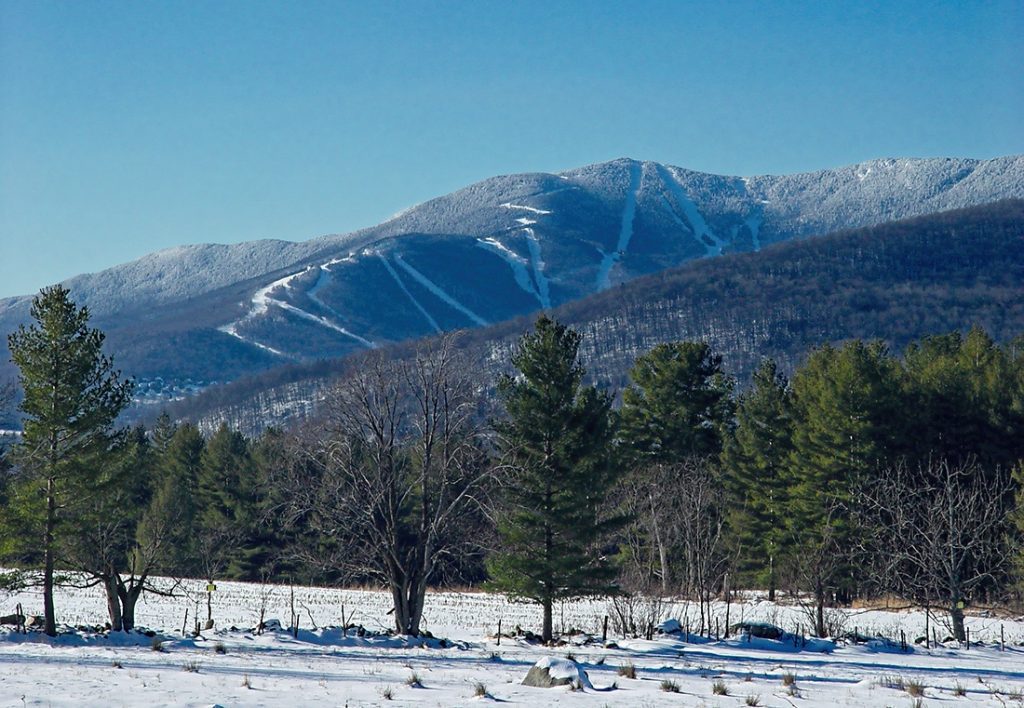
Formation of Corporate Ski Conglomerates in Vermont
A trend that began in the decade of the 70’s has continued into today: that of resort conglomerations and mega-mergers. The first ski area to enter this trend was that of Sunday River, Maine, which was bought by Killington in 1972. Smith tried to bring this floundering ski area into riches, but had no success. He sold it to manager Les Otten, in 1980. This mistake of selling this area would come back to plague Smith's company. The second mountain that was bought during the 70’s was the venerable Mt. Snow. This mountain had spent all of its money on the aforementioned uneconomical frills.
Mt. Snow was plunged into bankruptcy
Preston Smith, owner of Killington saw the prospects that Mt. Snow offered: wide trails, close to major cities, etc., and agreed to purchase the mountain. Like what has happened to every mountain that has been bought by another, massive changes happened. Gondolas were ripped out and replaced with triple and double chairlifts. The swimming pool and ice skating rinks were filled. Fountain Mountain was no more. Snowmaking was greatly expanded, however, and the mountain took on a new, sleeker look, perfect for survival in the upcoming 1980’s.
The early to mid 1980’s saw a continuation of mountain closings. The last of the rope tow only ski areas were closed. More municipally run ski areas that operated on T-bars solely closed. By 1987, only 39 ski areas were in operation (Lorentz 249). However, to offset these losses, larger mountains began to explode. Environmental laws were relaxed, and areas like Killington once again expanded into new territory, reaching six peaks by 1983. Snowmaking was expanded so much, that “the 80’s in New England will be remembered as the era of the flake-farming revolution,” (Oliver 76).
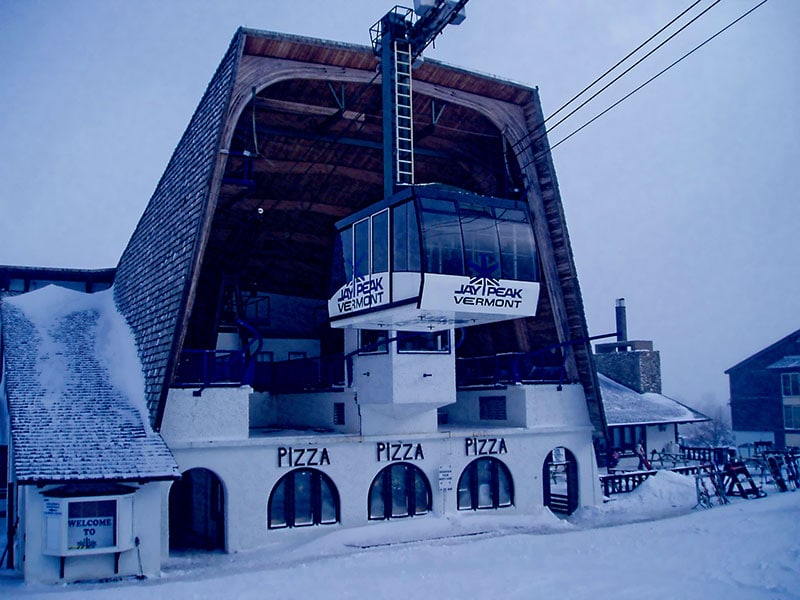
Rapid Development of Ski Areas in Vermont
Another ski area merger occurred when the small Carinthia ski area was bought and annexed to Mount Snow. This mountain added 18 trails and 3 lifts, giving Mt. Snow 84 trails in 1986.The other large contribution to skiing in Vermont was the invention of high-speed detachable quad chairlifts. These lifts carry an amazing three thousand skiers per hour, bringing a seemingly infinite amount of skiers to the slopes and trails of mountains. During the 1987-1988 season, high-speed quads were added to Pico Peak, Killington, and Mount Snow.
These quads would have their drawbacks, though, as too many skiers would tend to wreak havoc on trail conditions. Ski lift ticket costs would also soar during this period. In 1989, a high-speed quad replaced the single chairlift at Mount Mansfield, in Stowe. Individual chairs would be sold at the price of $300 per chair!
Once again, Mt. Snow would be increased in size during the early 1990’s with the purchase of Haystack, just three miles down the road. Haystack gave Mt. Snow an additional 43 trails, bringing their total up to 127 trails. Two more ski area closings would dampen the spirits of communities during 1991. Ascutney, in Brownsville, and Magic Mountain, in Londonderry, closed due to financial difficulties. These areas were classified as medium-sized, and thus dealt a significant blow to the Vermont economy.
Luck would change for the better for Ascutney during 1993. The Plaustiniers, a skiing family from New York, purchased the mountain for only 1.1 million dollars, an incredible bargain. The economy of Brownsville was revived with money pouring in from the increased tourism. The early 1990’s saw several poor snow seasons, which brought the need for continuing snowmaking expansion and improvements. It would also lead to further closure of ski areas. As of the early 1990’s, only 21 commercial ski areas were in operation, a far cry from the former 81 ski areas in the mid 1960’s. One area that desperately needed snowmaking was Sugarbush.
A Rebirth – Sugarbush Dubbed as “Mascara Mountain”
Sugarbush was founded in the late 1950’s, and like Mt. Snow catered to the richer metropolitan crowd. It was dubbed “mascara mountain” (Older 99), after the many models that skied there. The area grew significantly, and bought the nearby Glen Ellen ski area during the late 1970’s. Snowmaking was expanded throughout the next couple of decades, but could not match the snowmaking capabilities of other mountains. Also, the separation between the two areas did not allow ease of movement from one to the other. These two problems would be virtually wiped out in 1995.
During 1994, Sunday River Ski Resort purchased Sugarbush. The floundering resort was in desperate need for new owners. Les Otten and his company, LBO Enterprises, purchased the area and completed the “single largest expansion of lift and snowmaking in United States History,” (Sugarbush ski brochure, 1995-1996). The area changed overnight. A two-mile long connector high-speed quad was installed in the basin that had formerly isolated the two areas. Snowmaking was increased 300%! Seven new lifts, including four high-speed quads, were installed, allowing the mountain to become more accessible. Over 28 million dollars were spent.
Vermont Ski Area Merger
Sensing the changes at the LBO resorts, Killington purchased Waterville Valley in New Hampshire, entered into a partnership with Bromley in southern Vermont, and bought Sugarloaf in Maine. The two conglomerates would battle it out during the 1995-1996 season. “Operation Excitement” was brought to the Killington Resorts, now renamed S-K-I. New glades, which is skiing through the woods, and new trails including “Wild Things,” which are trails with no snowmaking or grooming were brought to S-K-I resorts.
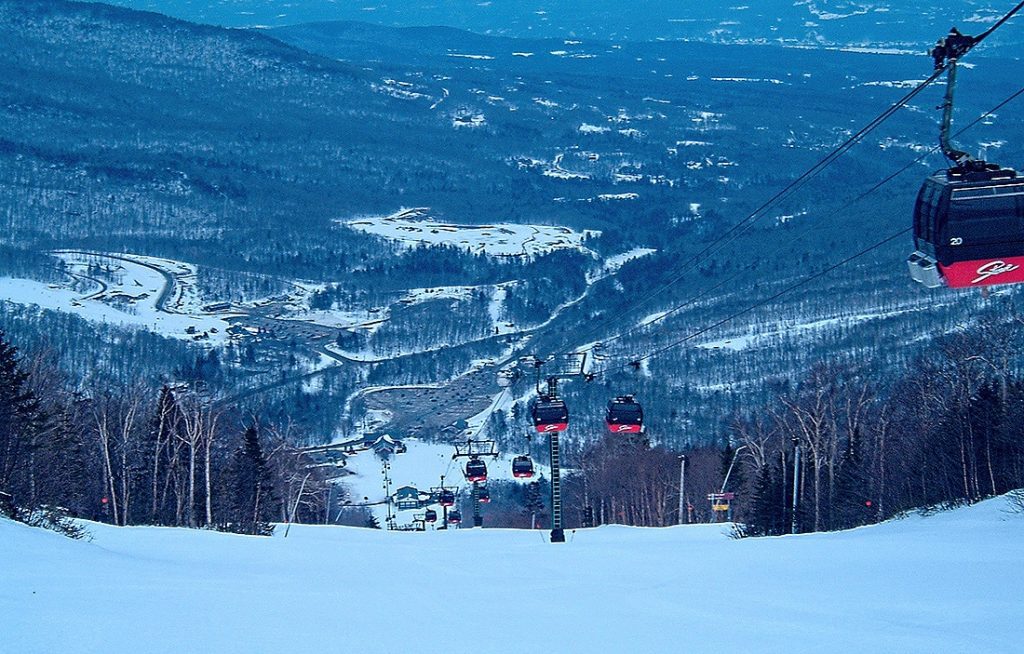
The bread-and-butter ultra wide trails now had their total counterparts in the woods.S-K-I almost made it. In the summer of 1996, a startling event in the history of skiing happened. LBO Enterprises purchased S-K-I’s holdings. Killington, which had once owned Sunday River, was owned by it. What an irony! This new company, called the American Skiing Company, today owns Killington, Mt. Snow, Haystack, Sugarbush, Attitash/Bear Peak in New Hampshire, Sunday River, and Sugarloaf in Maine. Along with this purchase came more benefits for Vermont areas – in 1996 Sugarbush gained a new glade, Mt. Snow two more lifts, and Killington a revolution similar to that of Sugarbush.
Five new lifts, new snowmaking, new base lodges, and new trails would be added for the 1996-1997 season. Also, Killington bought Pico Mountain in December, 1997, and plans are in place that will eventually connect the mountain to Killington via lifts and trails.
Other Vermont Ski Areas
One area in Vermont that has refused to have anything to do with modernization is Mad River Glen, in Waitsfield, Vermont. This ski area is an amazing throwback to the 40’s when it was created. It sports only 15% snowmaking, a single chair (along with 3 doubles), and limited grooming. Trails here are not wide super-trails, but rather narrow twisters that follow the mountain’s contours. Although the ski area is often closed during washouts, when snow is plentiful the skiing is incredible.
Magic Mountain in Londonderry has also gone through a rebirth. Closed since 1991, it reopened for skiing in December, 1997. This has given a boom to the economy of Londonderry. Since the mountain had lain dormant for so long, much reconditioning of the lifts and buildings was needed to open during this season.
Nearby Burke Mountain is also on the upswing. This mountain has never had any luck. Founded in 1957, the mountain grew steadily throughout the 1960’s. Ownerships changed hands rapidly throughout the 1970’s. In 1977 Lyndon drugstore owner Dennis Stevens commented “I’ve been burned too many times with this mountain,” (English 22). Ambitious plans have always been in the works, but lack of money had prompted owners to scale back any developments. Financial troubles almost closed the area many times in the past decade.
However, the Northern Star Ski Corporation purchased Burke in 1995, and Burke has since been made profitable. Permits have been provided for expansion, including “Six new top to bottom trails, new quad chair in East Bowl (originally planned for 1980)!, high speed quad to summit, and 90% snowmaking coverage,” (Burke ski brochure, 1996-1997). In two years Burke will be quite a different place to ski, an area of some prestige.
Vermont Ski History Conclusion
The hundred years of skiing in Vermont have brought considerable changes to the state and its industries. A state that once laughed at skiing now looks at it as one of its most important commodities. Excitement and fun have been brought into the forefront of winter’s activities.
The future of skiing in Vermont is unsure. It is conceivable that the American Skiing Company could develop financial or other troubles due to its large size. If this happened, serious problems would develop. Areas would be up for grabs. However, it is more likely that the number of closing areas will level off and then stop. With the addition of Magic Mountain in 1997, the number actually could rise a little.
Trail expansions will continue at most mountains for another decade, then level off as mountains reach their capacity. Since there will be no more room for expansions, attention will have to be focused on snowmaking, grooming, and lifts. Ways of enjoying the mountains that have not been dreamed of will be invented in the upcoming decades. Whatever the future path may be, one thing is for certain: Vermonters love winter sports, and it is almost certain skiing will be in the forefront.
Thank you for reading this post, don't forget to subscribe to our email list for the latest news!


